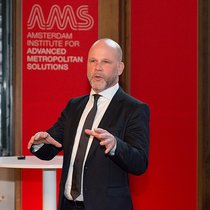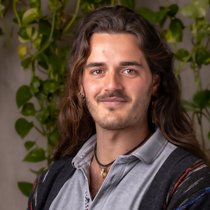Contribution to urban transition
The Green Holistic System (GHS) project vision is focused on creating climate-resilient and -adaptive cities, which can respond to climate change challenges. Thus, several Sustainable Development Goals (SDGs) are targeted, such as Clean Water and Sanitation (SDG 6), Sustainable Cities and Communities (SDG 11), Responsible Consumption and Production (SDG 12), Climate Action (SDG 13), and Life on Land (SDG 15).
The main objectives are to ensure circular and sustainable water management while supporting urban biodiversity. The idea proposes a dimension of coexistence and mutual support between urban nature and urban citizens. The GHS prototypes are made of a biodiverse green-roof, which hosts more than 40 native plant species (Dakbloemenweide). It is visible to pedestrians and isolated enough to allow nature to thrive, thus adding aesthetic and ecological value to the city. Additionally, it provides thermic insulation to the building, it can retain rainwater, and drain and store the excess water to reuse for irrigation.

The first prototype was built last year, and the team is currently working on the second prototype in collaboration with AMS Institute. The new prototype has been recently selected as a pilot site for testing green-roofs' use to remove pollutants from wastewater, within the AquaConnect project. In fact, the green-roof vegetation can act as a filter for sewage water treated with nanofiltration, which can be used to irrigate urban parks and urban green.
The relevance of this experiment is particularly evident in these recent years of severe drought. As water scarcity threatens human wellbeing and the environment, considering the possibility of transforming wastewater into a resource for maintaining a healthy green infrastructure could contribute significantly to a sustainable urban transformation.
Ongoing project and team
The most relevant innovative aspects of the Green Holistic System are its multifunctionality and scalability, which could potentially contribute to the urban transformation towards sustainable cities in Europe. The GHS has a flexible setting, which can be adapted to any building, and two main components, which are a green-roof and a water storage tank connected through a water circulation system. These components can be designed for different scales and adapted to structural requirements. Furthermore, the GHS simultaneously targets biodiversity and water management, which are recurring topics across European policy agendas. Nonetheless, we are also providing support to the AquaConnect project, which aims to develop smart water grids for water-scarce areas through multidisciplinary research.
The GHS project is led by a multidisciplinary and international team of experts, which was created to participate in the Nature-based Solutions Challenge, organised by WUR Student Challenges in 2022. Once the competition ended, the team decided to continue and develop our project.
| Duration: |
|
Principal Investigators
Project members
Partners







